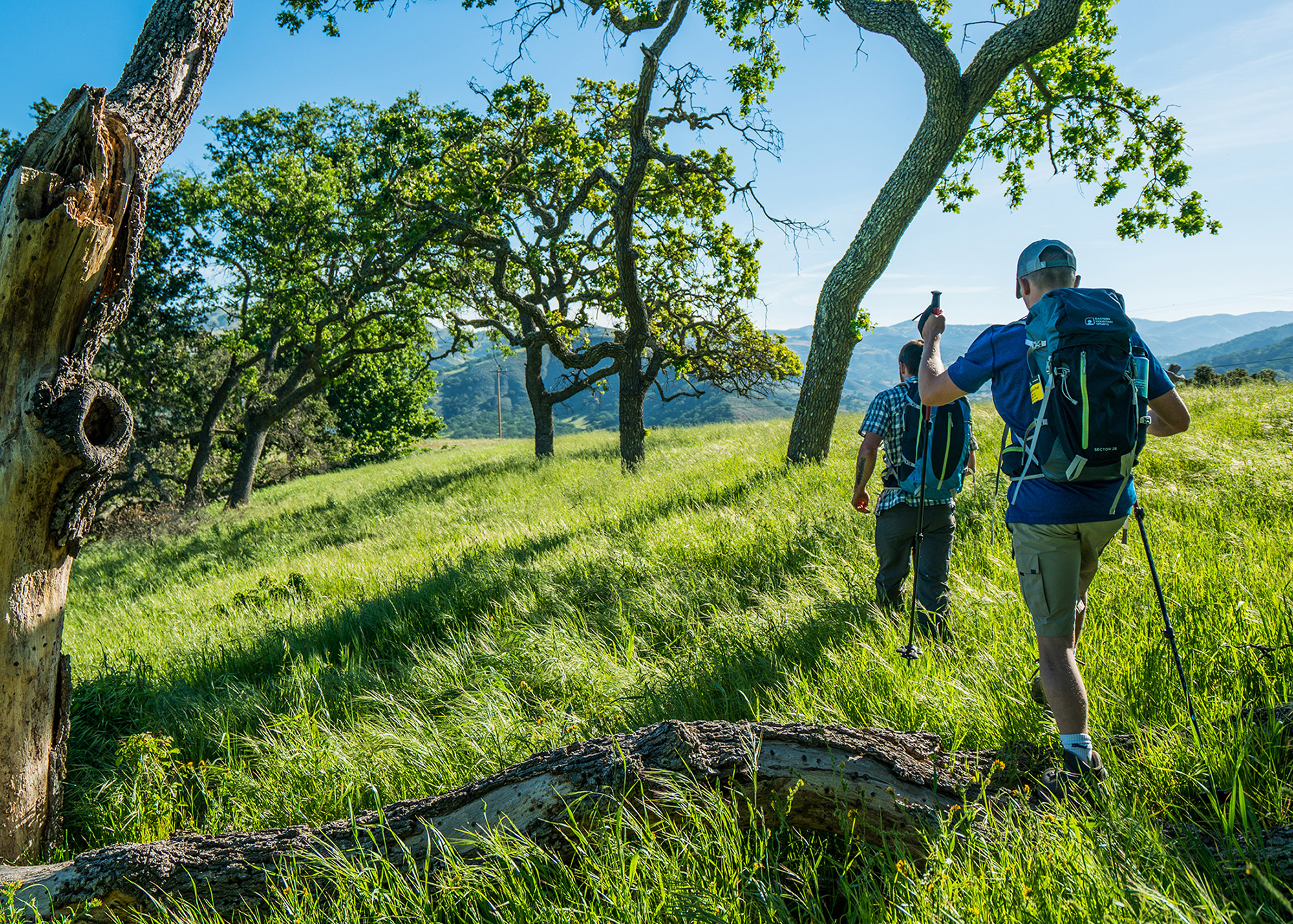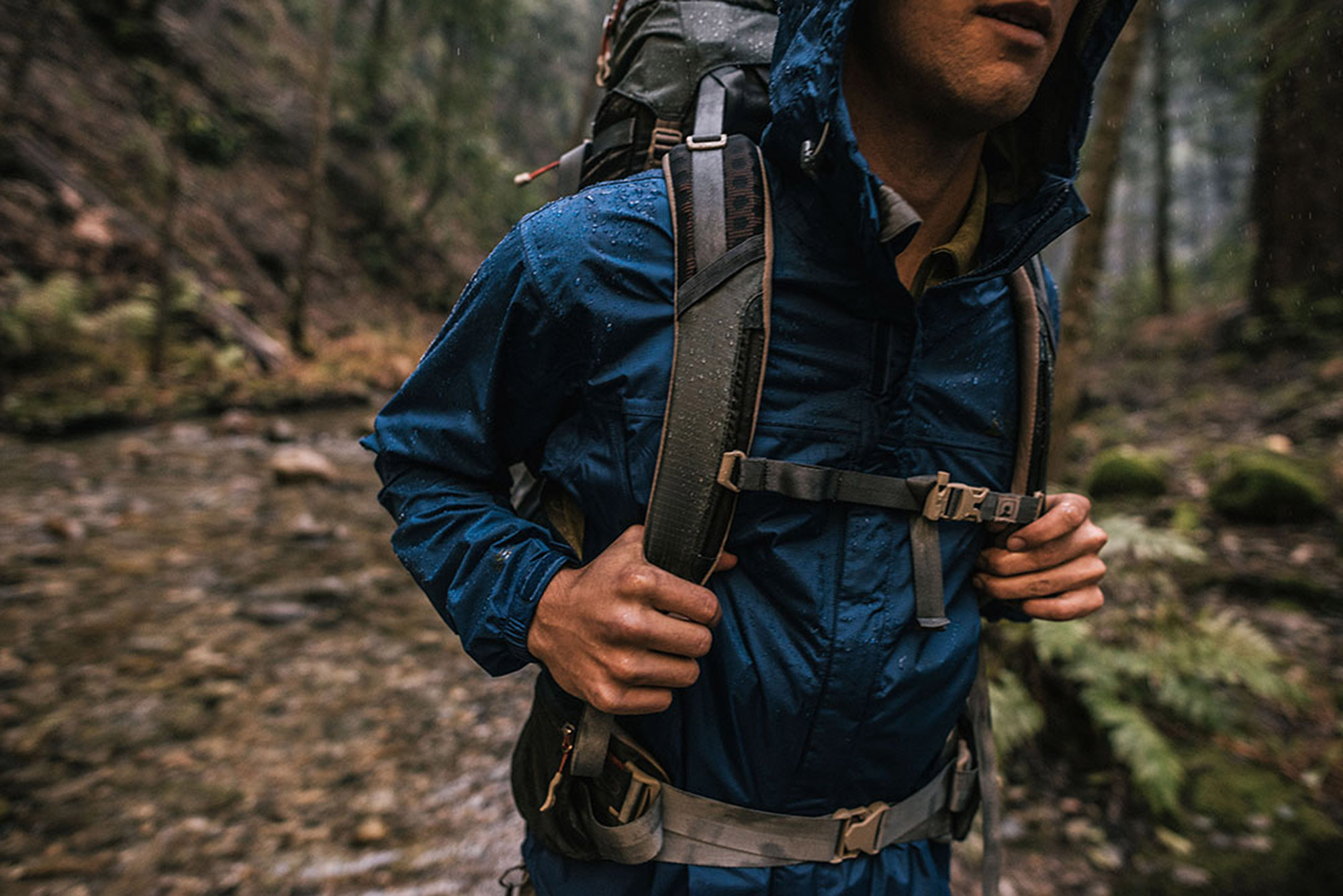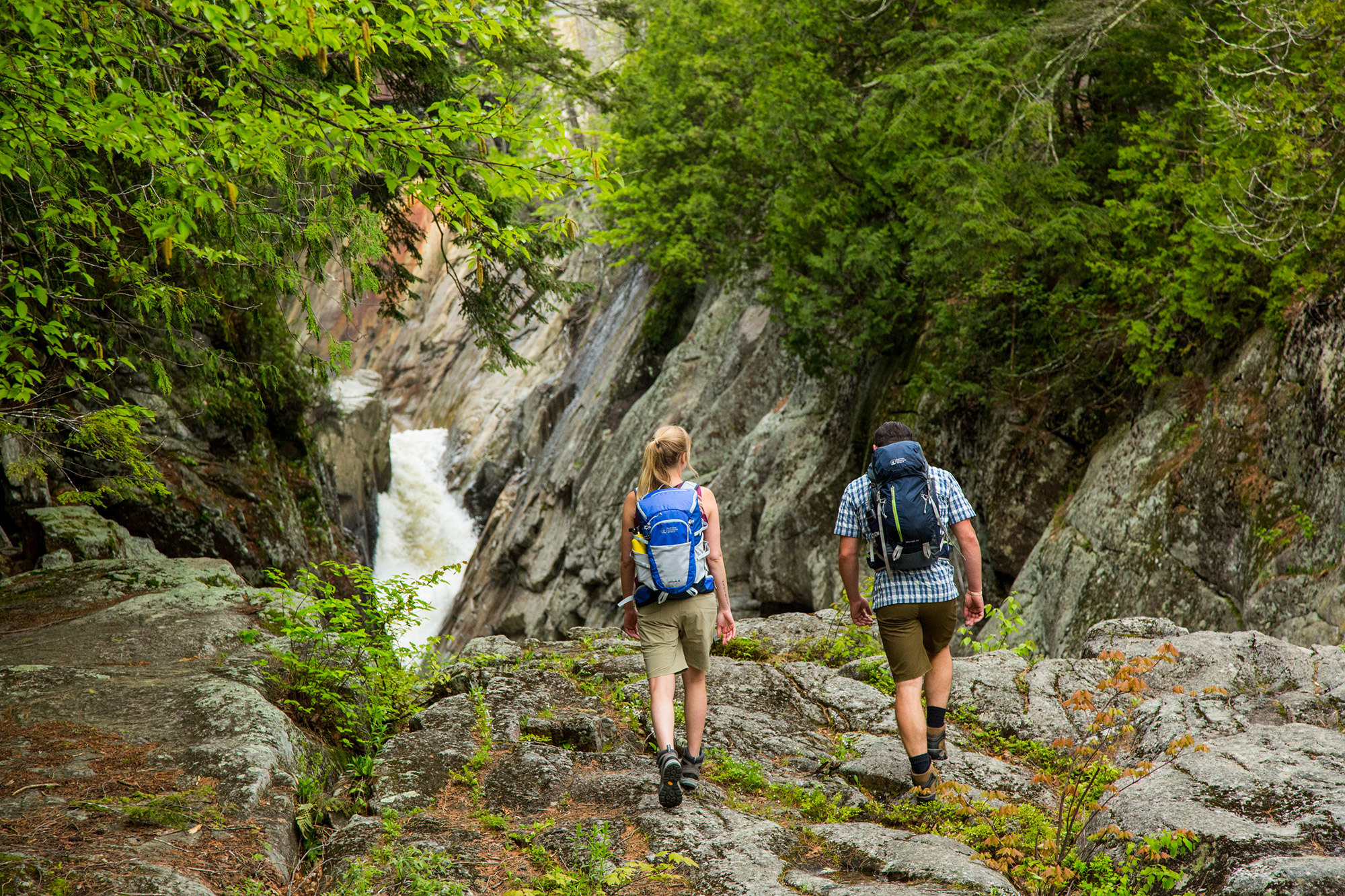Three years ago, I started hiking in earnest. I set out on my first solo hike, wearing a cotton T-shirt and jeans, and carrying a water bottle and small number of snacks in my pack. I didn’t carry a map, compass, or any of the 10 hiking essentials recommended for every backpacker. Looking back, I cringe at some of the poor decisions I made. My lack of experience and failure to understand the risks I was taking could have landed me in danger. Luckily, I was never injured and, to date, have returned safely from all of my hikes. But, over the past few years, I’ve learned a lot about hiking safely and the unwritten rules of backpacking.

1. Wearing jeans and cotton clothing
Wearing jeans or cotton clothing while you’re hiking is not only uncomfortable but it can also be dangerous. Clothing is your biggest defense against the weather and elements. If you’re wearing materials that don’t wick moisture away from your body or that don’t insulate well, you will be uncomfortable and risk becoming hypothermic. Instead, wear synthetic or wool materials. Smartwool’s merino blend, waterproof GORE-TEX, and EMS’ own moisture-wicking Techwick are all great examples. Also, always bring along extras, especially socks, a long-sleeved shirt, a wind-breaking jacket, gloves, and a hat.
2. Wearing flip-flops or shoes with poor traction
For hiking, proper shoes are one of the most important items to have. Thus, before you go, consider very carefully what you’ll be wearing on your feet. Most trails’ terrain is going to be rocky, muddy, wet, and slippery, and for this reason, flip-flops and dress shoes aren’t the best choices. Neither will keep you safe and comfortable in the woods. If the most rugged pair you own are tennis shoes, then wear those. But, still keep in mind you may encounter less-than-ideal trail conditions.

3. Not carrying enough of the essentials
Regardless of whether you’re going on a one-mile nature walk or a 10-mile 46er ascent, you should be carrying more than just a water bottle. For the most pertinent pieces, start with The 10 Essentials. This list covers items every backpacker should carry, regardless of how short the hike may be, and includes the bare minimum for a survival situation, such as a fire starter, compass and map, extra clothes, water, extra food, and a first aid kit. Most are inexpensive and easy to obtain.
4. Not telling anyone at home your itinerary
Cellphone service is never a guarantee in the backcountry. As such, don’t rely on it to contact home in the event of an emergency. Before leaving, always tell someone where you’re going, how long you plan to be gone, and the trails you will be taking. That way, if you don’t return by a certain time, they know to get help, and have key details about your route and location to pass along.

5. Not carrying a map or researching the trail ahead of time
Before leaving for a hike, it’s essential that you not only look at a map of the trail you’ll be taking, but read the trail description, as well. A topographic map doesn’t provide enough detail, and thus, reading the trail description might mean you’ll opt for one trail over another to reach the summit.
Designed to help you plan your hike, trail guidebooks often offer suggestions based on experience level, and list alternative routes for winter. Additionally, the trail descriptions prove to be useful in the event a route is poorly marked. In this case, because you know what the trail should look like, you have a greater chance of following the correct path. For these reasons, it’s extremely important to read the guidebook before setting out.
6. Underestimating the weather forecast
Before you set out, know what the weather is going to be like—both on the trail and at the summit. For every thousand feet of elevation you gain, you lose an average of 3.5° F. Don’t underestimate the mountains, and remember that although it may be 60° F at the trailhead, ascending a few thousand feet and adding 20 MPH winds will bring the temperatures down considerably.
Additionally, plan for inclement weather by carrying extra clothes, especially socks, a long-sleeved shirt, and a wind-breaking layer. Being prepared may mean the difference between an enjoyable day in the woods and a miserable one.

7. Not following Leave No Trace wilderness ethics
If everyone left their garbage in the woods, or didn’t bury their waste, imagine how disgusting the trails would be. To keep the wilderness ready for other hikers, it’s essential that you carry out all trash. To prepare, bring an extra Ziploc bag in your pack to hold onto any trash. If you see other people’s trash on the trail, it doesn’t hurt to pick it up, either.
All waste, along with any toilet paper, should be buried, assuming you follow LNT practices and the land manager allows it. Carry some hand sanitizer in your pack, a trowel, and toilet paper. Walk at least 200 feet from the trail, water sources, and the campsite (70 steps), and dig a cathole using a trowel. Catholes should be four to six inches wide and six to eight inches deep. Bury both waste and paper in the hole.
8. Not being courteous to others while hiking
Although you may feel like you’re the only person in the woods, chances are you’re going to encounter other people. Be courteous and respect their right to enjoy the woods, too. Share the trail with them, allow them to pass if they are hiking faster than you, or turn down your music, so they can enjoy the sounds of nature. If you’re hiking in a larger party, keep in mind how loud you’re getting when engaging in conversations, and respect the solitary hikers you may come across by giving them the option to pass you on the trail.
Everyone starts out as a beginner, and trying something new means that you will be learning lessons along the way. Although I call myself a moderately experienced hiker, I’m still learning. As new gear comes out, and I spend more time in the wilderness, I become more familiar with what works for me and what doesn’t. The only way to become better at something is to be open to learning from mistakes made along the way. Spend some time researching backpacking basics, practice smart decision-making, and remember that there is no shame in asking for help or calling it quits when a climb becomes too scary or difficult. The mountain will always be there when you’re ready.

Rebecca Sperry
Rebecca Sperry is an avid year round hiker who resides in southern New Hampshire. She has completed the NH 48, NE 67, and is currently working on completing the NH 48 for a second time. Rebecca hikes almost exclusively solo and encourages women to step outside their comfort zone, get outside, and enjoy the wilderness. You can follow her adventures @sockedinhikes.
Related Posts
April 2, 2024
10 Tips for Mountain Biking Etiquette During Mud Season
One rough spring could ruin the…




